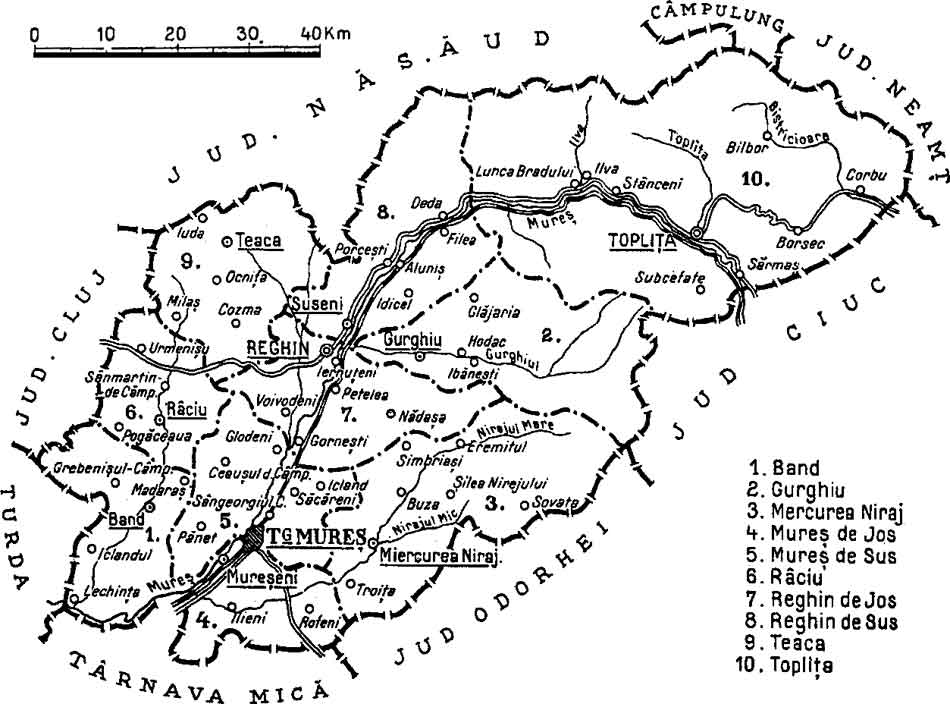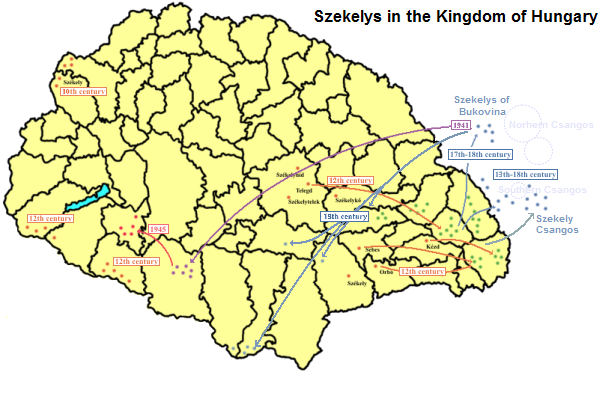|
Acățari
Acățari (, ) is a commune in Mureș County, Transylvania, Romania composed of nine villages: Acățari, Corbești (''Székelycsóka''), Găiești (''Göcs''), Gruișor (''Kisgörgény''), Murgești (''Nyárádszentbenedek''), Roteni (''Harasztkerék''), Stejeriș (''Cserefalva''), Suveica (''Szövérd''), and Vălenii (''Székelyvaja''). Demographics The commune has an absolute Székely Hungarian majority. According to the 2011 census, it had a population of 4,781, of which 85.84% were Hungarian, 10.19% Roma, and 1.92% Romanians. See also * List of Hungarian exonyms (Mureș County) This is a list of Hungarian names for towns and communes in Mureș County, Transylvania, Romania. {{DEFAULTSORT:List of Hungarian exonyms (Mures County) Mures County Hungarian exonyms in Mures Hungarian Hungarian Exonyms An endonym ... References {{DEFAULTSORT:Acatari Communes in Mureș County Localities in Transylvania ... [...More Info...] [...Related Items...] OR: [Wikipedia] [Google] [Baidu] |
List Of Hungarian Exonyms (Mureș County)
This is a list of Hungarian names for towns and communes in Mureș County, Transylvania, Romania. {{DEFAULTSORT:List of Hungarian exonyms (Mures County) Mures County Hungarian exonyms in Mures Hungarian Hungarian Exonyms An endonym (also known as autonym ) is a common, name for a group of people, individual person, geographical place, language, or dialect, meaning that it is used inside a particular group or linguistic community to identify or designate them ... Hungarian ... [...More Info...] [...Related Items...] OR: [Wikipedia] [Google] [Baidu] |
Mureș County
Mureș County (, , ) is a county (''județ'') of Romania, in the Historical regions of Romania, historical region of Transylvania, with the administrative centre in Târgu Mureș. The county was established in 1968, after the administrative reorganization that re-introduced the historical ''județ'' (Counties of Romania, county) system, still used today. This reform eliminated the previous Magyar Autonomous Region, Mureș-Magyar Autonomous Region, which had been created in 1952 within the People's Republic of Romania. Mureș County has a vibrant multicultural fabric that includes Székely Land, Hungarian-speaking Székelys and Transylvanian Saxons, with a rich heritage of Villages with fortified churches in Transylvania, fortified churches and towns. Name In Hungarian language, Hungarian, it is known as ''Maros megye'' (), and in German language, German as ''Kreis Mieresch''. Under Kingdom of Hungary, a county with a similar name (Maros-Torda County, ) was created in 1876. There ... [...More Info...] [...Related Items...] OR: [Wikipedia] [Google] [Baidu] |
Transylvania
Transylvania ( or ; ; or ; Transylvanian Saxon dialect, Transylvanian Saxon: ''Siweberjen'') is a List of historical regions of Central Europe, historical and cultural region in Central Europe, encompassing central Romania. To the east and south its natural border are the Carpathian Mountains and to the west the Apuseni Mountains. Broader definitions of Transylvania also include the western and northwestern Romanian regions of Crișana and Maramureș, and occasionally Banat. Historical Transylvania also includes small parts of neighbouring Western Moldavia and even a small part of south-western neighbouring Bukovina to its north east (represented by Suceava County). Transylvania is known for the scenery of its Carpathian landscape and its rich history, coupled with its multi-cultural character. It also contains Romania's second-largest city, Cluj-Napoca, and other very well preserved medieval iconic cities and towns such as Brașov, Sibiu, Târgu Mureș, Bistrița, Alba Iuli ... [...More Info...] [...Related Items...] OR: [Wikipedia] [Google] [Baidu] |
Romania
Romania is a country located at the crossroads of Central Europe, Central, Eastern Europe, Eastern and Southeast Europe. It borders Ukraine to the north and east, Hungary to the west, Serbia to the southwest, Bulgaria to the south, Moldova to the east, and the Black Sea to the southeast. It has a mainly continental climate, and an area of with a population of 19 million people. Romania is the List of European countries by area, twelfth-largest country in Europe and the List of European Union member states by population, sixth-most populous member state of the European Union. Europe's second-longest river, the Danube, empties into the Danube Delta in the southeast of the country. The Carpathian Mountains cross Romania from the north to the southwest and include Moldoveanu Peak, at an altitude of . Bucharest is the country's Bucharest metropolitan area, largest urban area and Economy of Romania, financial centre. Other major urban centers, urban areas include Cluj-Napoca, Timiș ... [...More Info...] [...Related Items...] OR: [Wikipedia] [Google] [Baidu] |
Székelys
The Székelys (, Old Hungarian script, Székely runes: ), also referred to as Szeklers, are a Hungarians, Hungarian subgroup living mostly in the Székely Land in Romania. In addition to their native villages in Suceava County in Bukovina, a significant population descending from the Székelys of Bukovina currently lives in Tolna County, Tolna and Baranya County, Baranya counties in Hungary and certain districts of Vojvodina, Serbia. In the Middle Ages, the Székelys played a role in the defense of the Kingdom of Hungary#Middle Ages, Kingdom of Hungary against the Ottoman Empire, Ottomans in their posture as guards of the eastern border. With the Treaty of Trianon of 1920, Transylvania (including the Székely Land) became part of Romania, and the Székely population was a target of Romanianization efforts. In 1952, during the Socialist Republic of Romania, communist rule of Romania, the former counties with the highest concentration of Székely population – Mureș County#His ... [...More Info...] [...Related Items...] OR: [Wikipedia] [Google] [Baidu] |
Hungarians In Romania
The Hungarian minority of Romania (, ; ) is the largest ethnic minority in Romania. As per the 2021 Romanian census, 1,002,151 people (6% of respondents) declared themselves Hungarian, while 1,038,806 people (6.3% of respondents) stated that Hungarian was their mother tongue. Most ethnic Hungarians of Romania live in areas that were parts of Hungary before the Treaty of Trianon of 1920. Encompassed in a region known as Transylvania, the most prominent of these areas is known generally as Székely Land (; ), where Hungarians comprise the majority of the population. Transylvania, in the larger sense, also includes the historic regions of Banat, Crișana and Maramureș. There are forty-one counties of Romania; Hungarians form a large majority of the population in the counties of Harghita (85.21%) and Covasna (73.74%), and a large percentage in Mureș (38.09%), Satu Mare (34.65%), Bihor (25.27%), Sălaj (23.35%), and Cluj (15.93%) counties. There also is a community of H ... [...More Info...] [...Related Items...] OR: [Wikipedia] [Google] [Baidu] |
2011 Romanian Census
The 2011 Romanian census was a census held in Romania between 20 and 31 October 2011. It was performed by some 120,000 census takers in around 101,000 statistic sectors throughout the country established by the National Institute of Statistics (INS) of Romania. Preparations started already in 2009, and it was announced that the process would not end until 2014. Anyone who did not answer questions in the census questionnaire would be fined between 1,500 and 4,500 Romanian lei, although 4 of the 100 questions related to the respondent's ethnicity, mother language, religion, and possible disabilities were not mandatory. Preliminary results were released once on 2 February 2012 and again on 20 August 2012. The final definitive result of the census came out on 4 July 2013, showing that, among other things, Romania had lost 1,559,300 people since the 2002 census, consequently having 20,121,641 inhabitants. Some people like sociologist Vasile Ghețău, director of the Center of Demog ... [...More Info...] [...Related Items...] OR: [Wikipedia] [Google] [Baidu] |
Romani People In Romania
Romani people in Romania, locally and pejoratively referred to as the (), constitute the second largest ethnic minority in the country (the first being Hungarians). According to the 2021 census, their number was 569,477 people and 3.4% of the total population. The size of the total population of people with Romani ancestry in Romania is even more, with different estimates varying from 4.6 percent to over 10 percent of the population, because many people of Romani descent do not declare themselves Roma. For example, in 2007 the Council of Europe estimated that approximately 1.85 million Roma lived in Romania, based on an average between the lowest estimate (1.2 to 2.2 million people) and the highest estimate (1.8 to 2.5 million people) available at the time. This figure is equivalent to 8.32% of the population. On the other hand, less than half are native speakers of the Romani language. Origins History, genetics and linguistics all indicate the Roma originate from northern Indi ... [...More Info...] [...Related Items...] OR: [Wikipedia] [Google] [Baidu] |
Romanians
Romanians (, ; dated Endonym and exonym, exonym ''Vlachs'') are a Romance languages, Romance-speaking ethnic group and nation native to Central Europe, Central, Eastern Europe, Eastern, and Southeastern Europe. Sharing a Culture of Romania, common culture and Cultural heritage, ancestry, they speak the Romanian language and live primarily in Romania and Moldova. The 2021 Romanian census found that 89.3% of Romania's citizens identified themselves as ethnic Romanians. In one interpretation of the 1989 census results in Moldova, the majority of Moldovans were counted as ethnic Romanians as well.''Ethnic Groups Worldwide: A Ready Reference Handbook By'' David Levinson (author), David Levinson, Published 1998 – Greenwood Publishing Group.At the time of the 1989 census, Moldova's total population was 4,335,400. The largest nationality in the republic, ethnic Romanians, numbered 2,795,000 persons, accounting for 64.5 percent of the population. Source U.S. Library of Congres ... [...More Info...] [...Related Items...] OR: [Wikipedia] [Google] [Baidu] |
Shadoof
A shadoof or shaduf, well pole, well sweep, sweep,Knight, Edward Henry. ''Knight's American mechanical dictionary''. Vol. 3. New York, Hurd and Houghton: Riverside Press, 1877. 2,468. Print. swape, or simply a lift is a tool that is used to lift water from a well or another water source onto land or into another waterway or basin. It is highly efficient, and has been known since 3000 BCE. The mechanism of a shadoof comprises a long counterbalanced pole on a pivot, with a bucket attached to the end of it. It is generally used in a crop irrigation system using basins, dikes, ditches, walls, canals, and similar waterways. History One theory states that the shadoof was invented in prehistoric times in Mesopotamia as early as the time of Sargon of Akkad (around 24th and 23rd centuries BCE). The earliest evidence of this technology is a cylindrical seal with a depiction of a shadoof dating back to about 2200 BCE. Then, it is believed that the Minoans adopted this technology; evid ... [...More Info...] [...Related Items...] OR: [Wikipedia] [Google] [Baidu] |
Communes In Mureș County
A commune is an alternative term for an intentional community. Commune or comună or comune or other derivations may also refer to: Administrative-territorial entities * Commune (administrative division), a municipality or township ** Communes of Algeria ** Communes of Angola ** Communes of Belgium ** Communes of Benin ** Communes of Burundi ** Communes of Chile ** Communes of the Democratic Republic of the Congo ** Communes of France ** Communes of Italy, called ''comune'' ** Communes of Luxembourg ** Communes of Moldova, called ''comună'' ** Communes of Niger ** Communes of Romania, called ''comună'' ** Communes of Switzerland ** Commune-level subdivisions (Vietnam) *** Commune (Vietnam) *** Commune-level town (Vietnam) ** People's commune, highest of three administrative levels in rural China, 1958 to 1983 Government and military/defense * Agricultural commune, intentional community based on agricultural labor * Commune (rebellion), a synonym for uprising or revolutionary ... [...More Info...] [...Related Items...] OR: [Wikipedia] [Google] [Baidu] |




